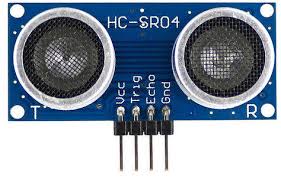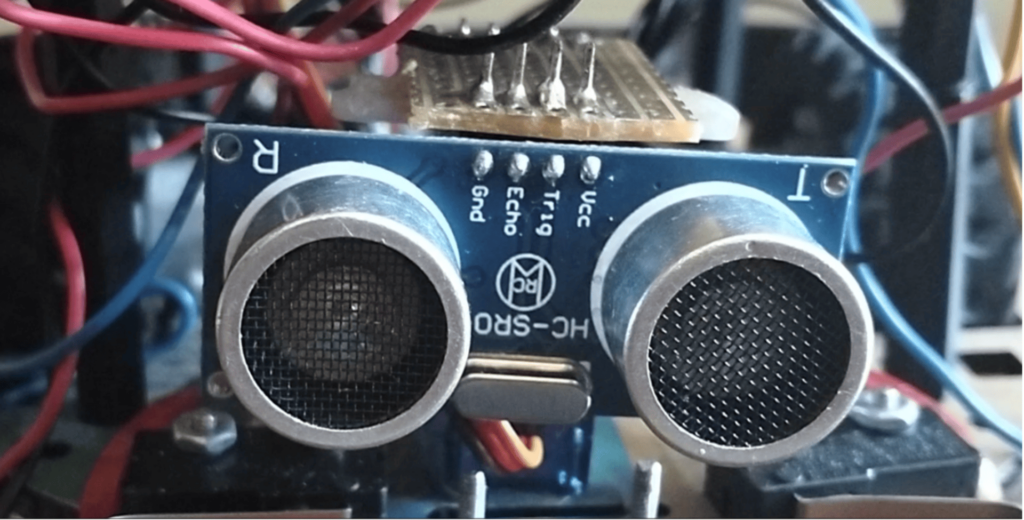
Ultrasonic sensors employ sound waves beyond the range of human hearing to measure distances. Emitting short pulses of ultrasonic waves, they calculate distance based on the time it takes for the waves to bounce off objects and return. Widely used in robotics, automotive, and industrial settings, they enable precise object detection, proximity sensing, and liquid level measurement. These sensors facilitate tasks such as obstacle avoidance in autonomous vehicles, parking assistance systems, and flow rate measurement in pipelines. Offering accuracy and reliability, ultrasonic sensors are essential components in various applications where non-contact distance sensing is crucial for operational efficiency and safety. As you can see from this they have 4 points they are Vcc, trigger, echo and ground that need to be connected.
An ultrasonic sensor mounted on a servo motor forms a highly effective radar system for various robotic applications, including autonomous vehicles and surveillance devices. This configuration allows the sensor to rotate and cover a wide range of angles, providing a comprehensive 360-degree view of the surroundings. The ultrasonic sensor works by emitting sound waves and measuring the time it takes for the echoes to return, thus determining the distance to nearby objects with high accuracy. When coupled with a servo motor, the sensor can be dynamically directed to focus on specific areas of interest, enhancing object detection and spatial mapping capabilities. This setup is particularly useful in environments where the robot needs to navigate or monitor continuously changing conditions, as it can quickly adjust to detect obstacles or track movement across a broad area.

